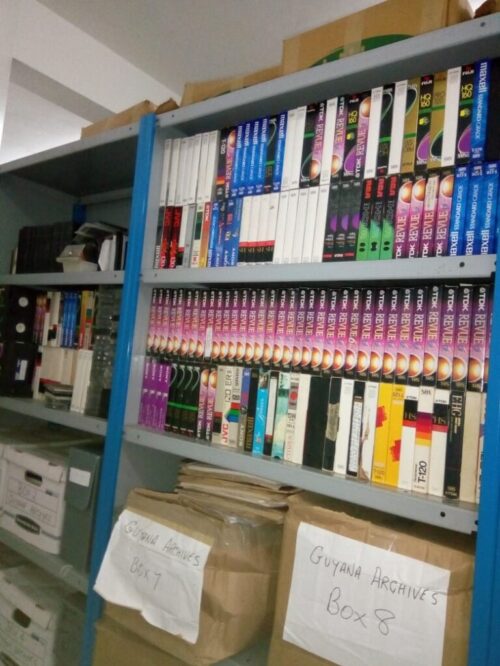About Us
Old archive newspapers typically refer to physical or digital collections of historical newspapers, often dating back to the 19th or early 20th centuries.
Our
Mission
Our History
The archival collection dates back to the period of Dutch occupation when documents were stored in the Dome of Parliament Buildings. The National Archives of Guyana was organized in 1958. It holds a vast quantity of historical data valuable to the overall national development thrust of the country.
In 1982, the National Archives of Guyana Act was passed, thereby establishing the National Archives as a department. This act provides for a National Archives Advisory Committee. Its members are appointed by the Minister. The main function of the Committee is to advise the Minister on matters of general archival policy and to review the work and progress of the department.
As a department, the Archives is charged with the custody of the nation’s official records created by the Government Departments in the course of the discharge of their activities. When the activities that led to the creation of a particular record has been completed, the immediate value of that record is at end. But the record may have a further long-term value, to the administrator as a guide for future planning, or to the scholar for historical research. It is those records that have served the immediate purposes for which they were created but have further long-term value that are our primary concern at the National Archives.
In 2007 the NAG was moved to the Walter Rodney building with an Archivist and an infusion of trained staff. Their first task was to use international Archives guidelines to revamp the work of the Archives by standardizing key archival functions. As part of this growth the NAG through its Record Management workshops sought to build
partnerships with other government agencies with records of value. In 2012 the NAG was moved into a new phase with the creation of the Digitization unit funded by the Government of Guyana and UNESCO. Researchers could now conduct research via website.
Looking ahead the NAG plans to strengthen its internal functions in the area of conservation and preservation. Thus successfully fulfilling our mandate.
Key Features of the National Archives of Guyana
-
This is an ongoing process that may be done through various stages of the life cycle of a document although it is of particular relevance to evaluate the historical and informative importance of the record before entering it into the national archives fond.
The review of departmental records
The archive also collects private records of relevance
The National Archives of Guyana Act
The Holdings of
the National Archives of Guyana
The repertoire of records preserved by the National Archives is fairly extensive, with approximately 700 meters of textual material, 10,000 printed items and 55 meters of newspapers (32 titles).
Of the total holdings approximately 5% date from the 18th century, 55% from the 19th century and 40% from the 20th century. The Dutch collection is the oldest group. These date back to 1735.
Titles in the collection include;
Official Gazettes -The governing authorities of British, later Guyana, published these gazettes, which contain official acts and notices, by- laws, proclamations, circular, etc., and cover a wide variety of business of the colony.
Immigration documents, Certificates, Registers, Letter Books- Recorded the official government business related to Indentureship of Indian immigrants to Guyana.
Court Of Policy and Combine Court Proceedings – They record minutes of official meetings accompanied by papers, petitions, draft bills, etc.
Newspapers;
The Daily Chronicle-1819-current
The Evening Post-1958-1973
The Daily Argosy-1880-1961
The Royal Gazette-1816-1889
The Creole-1856-1882
The Colonist-1851-1883
The Guyana Graphic-1945-1970

